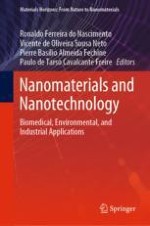2021 | Buch
Nanomaterials and Nanotechnology
Biomedical, Environmental, and Industrial Applications
herausgegeben von: Prof. Ronaldo Ferreira do Nascimento, Dr. Vicente de Oliveira Sousa Neto, Prof. Dr. Pierre Basílio Almeida Fechine, Prof. Paulo de Tarso Cavalcante Freire
Verlag: Springer Singapore
Buchreihe : Materials Horizons: From Nature to Nanomaterials
